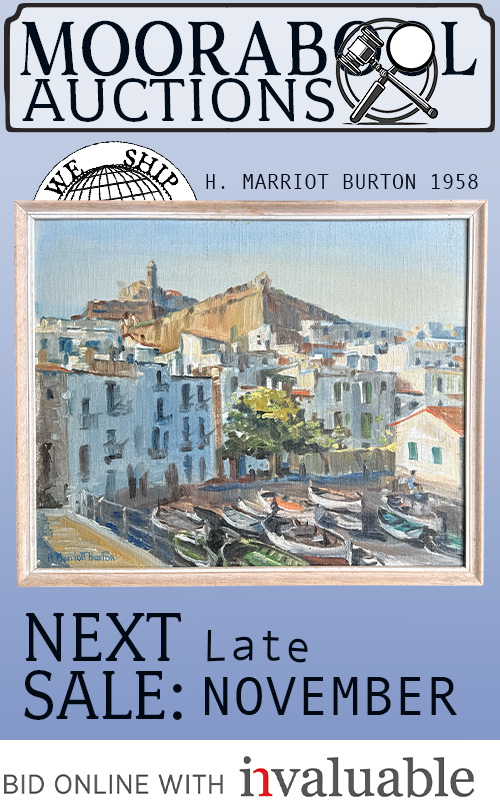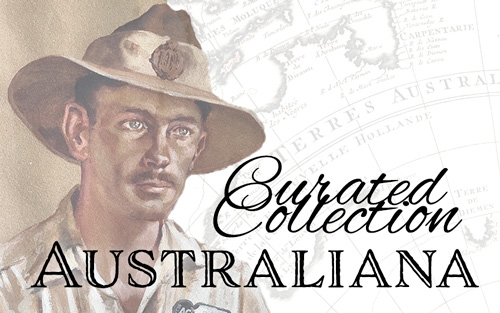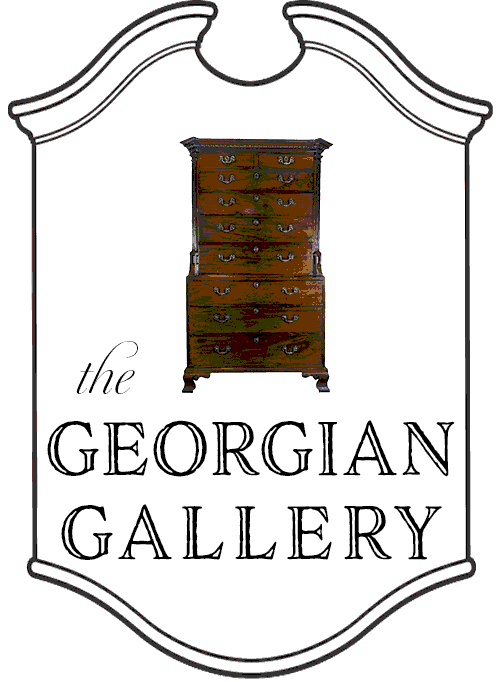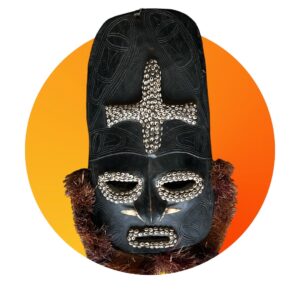For Australians, the First Fleet is the beginning of western culture and the foundation of our present society. Items connected with this remarkable period in Australia’s history are understandably scarce. Moorabool is very excited to have a fresh discovery with direct connections to Australia’s founding.
One of the most fascinating tales that can be told about Australia is that of the founding of the British colony in 1788. Items connected to this event are extremely scarce. From a ceramic historian’s perspective, there is the remarkable Sydney Cove medallion, made by Josiah Wedgwood from clay sent back from Australia by Governor Phillip in November 1788. Phillip wrote back in July 1790, noting ‘ I return thanks for the Cup & Medallions ‘ – indicating he had already received back what could be classed as the first Australian Pottery to be made…. although the kiln & sculptors were in England!
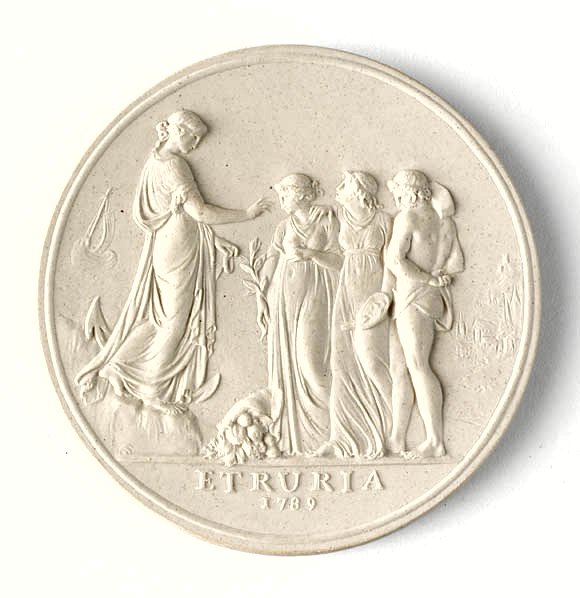
A recent discovery from the same period shares close ties with the first years of British settlement. It’s a coffee cup & saucer, well known as a distinct product of the Chamberlains Worcester factory from the mid 1790’s. It is painted in a fresh looking pattern with ears of barley bound by a gilt bow, and with an interesting central crest featuring a seahorse.


This is the important part; the crest will be familiar to anyone with a knowledge of the Newcastle University, as it shares a common origin, the armorial of the Shortland family. It was chosen as the symbol for the Newcastle University in the 1950’s due to an important connection: the site of Newcastle had been explored by a certain John Shortland in 1797, while in pursuit of runaway convicts from the fledgling colony of Sydney.
This revelation led to some fascinating research. The first thing to note is there is more than one ‘John Shortland’ to investigate, and they have been hopelessly confused with each other in the past due to their similar stories. The Newcastle University’s adoption of the Shortland crest because of its association with the John who explored the area is one such mistake: the actual bearer of the crest was back in England at that time!


John Shortland (senior), right, was born in 1739, and died in 1803. He served in the Royal Navy 1755-90, and having proved himself a capable logistics man, in 1786 was appointed naval agent to the transports of the planned First Fleet. He was in fact the ‘man on the scene’ at Portsmouth, responsible for preparing and distributing the stores and convicts aboard the 11 vessels that made up the enterprise: Governor Phillip only arrived two days before departure! John Shortland Snr was a senior officer on board the Alexander, a convict ship with 210 men on board.
As a part of this preparation for the adventure of a lifetime, he was able to secure appointments for his two sons, John and Thomas George Shortland.

His son, John Shortland (Junior), left, was born in 1769 and also entered the Royal Navy, ending his life in a blaze of glory fighting off four French gunships in the West Indies in 1810. The post his father secured for him was that of Master’s Mate on the HMS Sirius, which was captained by John Hunter and carried Governor Phillip.
The departing fleet in 1787 therefore included both John Shortlands. After calling in at Tenerife and Rio de Janeiro, the fleet stocked up on provisions in Cape Town, departing for the last, long leg through the inhospitable cold Southern Ocean. This was an immensely brave undertaking. A modern equivalent would be sending a colony to Mars through the vast coldness of space, into an inhospitable and little understood landscape, carrying everything that would be needed for survival for the next few years – and discovering the land was already populated by a well-established culture that would very soon prove hostile. What a remarkable adventure the Shortland’s had….
The colony of Sydney began to take shape, and a pre-planned re-supply from England was expected any moment: however, it never came. The colony was critically short of food: some of the convict transports had been contracted out by the East India Company to collect tea in China bound for England, and had already left. On 14 July 1788, the Alexander under the command of Lieutenant John Shortland Snr, and three other ships left Sydney to make their way back to England and ensure supplies were sent back to the struggling colony. Things were so bad there was little food spare for the crew on the voyage. Two days out they parted ways, with two ships heading across the South Pacific to Rio de Janeiro, and the Alexander and the Friendship deciding to head to the north and reach the Dutch colony of Batavia. The other two ships limped into Rio several months later, having lost many crew and with those remaining so ill they couldn’t anchor their own ships.
 The Alexander and the Friendship made their way up the eastern Australian coastline, around the east of New Guinea, and across present day Indonesia to Batavia. This was an epic journey through unexplored waters, which Shortland was able to document in great detail in his chart, published soon after his return to England in 1789. The work is a detailed map, suitable for use by any ships that might follow that route afterwards, and the acknowledging inscription bears the name of both the father, Lieutenant John Shortland, and the compiler of the map, Thomas George Shortland. Once again, the father had obtained a position for his son on board his ship, this time his second son as second mate.
The Alexander and the Friendship made their way up the eastern Australian coastline, around the east of New Guinea, and across present day Indonesia to Batavia. This was an epic journey through unexplored waters, which Shortland was able to document in great detail in his chart, published soon after his return to England in 1789. The work is a detailed map, suitable for use by any ships that might follow that route afterwards, and the acknowledging inscription bears the name of both the father, Lieutenant John Shortland, and the compiler of the map, Thomas George Shortland. Once again, the father had obtained a position for his son on board his ship, this time his second son as second mate. 
Their adventures were intense, as wracked by scurvy and illness they made their way through uncharted waters. Things came to a head when the Friendship ran aground: there simply were not enough men to maintain both ships, and so the decision was made to abandon the Friendship and consolidate the crew on the Alexander. Things got even worse, and by the time they reached the coast of Borneo, only a single crew member was fit for duty aloft other than the officers. It was at this moment they found themselves the prey of pirates, who suddenly appeared in four large row-boats and attempted to intercept the ship. A shot fired from a cannon persuaded them to give up the chase. A few days later, they found themselves just a short distance from Batavia- but with only a single man fit for work, the decision was made to drop anchor, although the crew was unable to furl their own sails. A boat with a few barely capable men set out, and were able to bring the much needed assistance of able bodied men back, and finally the Alexander limped into Batavia on 19 November 1788. By late May 1789, she was back in England, and John Shortland Snr was able to deliver the official dispatches Governor Phillip had entrusted to him, revealing the sad state of the colony. He spent his remaining time in the Royal Navy agitating within the Admiralty to ensure the colony was provided for, before retiring in 1790. He was also very interested in further exploration in Australian waters, and we can credit him for urging the Admiralty to dispatch Mathew Flinders in HMS Investigator which resulted in the first circumnavigation of Australia.
Meanwhile, back in Sydney, John Shortland Jnr also had an exciting time. He was involved with the supply runs to Norfolk Island in the effort to keep the colony fed. In 1792, he returned to England, returning the following year to Sydney. Three years later, he was sent in pursuit of the audacious convicts who had stolen the Cumberland, a locally built ship described as ‘the largest and best in the colony’. John Shortland Jnr was sent in pursuit, setting out in two whaleboats. One turned back, but Shortland spent several days exploring the area around Port Stevens, returning with a rough map of the area Newcastle now stands on, and bringing a sample of coal. In a letter to his father back in England he described the Hunter (or ‘Coal’) River he had found, and stated “In a little while this river will be a great acquisition to the settlement”.
He was a member of the criminal court in Sydney, but returned to England in 1800 just in time to be a part of the Napoleonic Wars, heading to Egypt in 1800 as agent of the English troops. After various other postings, he found himself fighting the French in the West Indies, and finally in December 1809 went ‘out with a bang’ fighting as Captain of the 38-gun HMS Junon, taking on overwhelming odds of two 48-gun and two 20-gun French ships. He died of his wounds in January 1810, less than 7 years after his father, and probably before he had a chance to inherit and enjoy the family china……
It is very rarely we get to discover a piece of ceramic as infused with history as this cup & saucer.
Pieces such as this with family crests were commissioned from the factory, and used in polite society while entertaining. When coming to a conclusion about who owned this set, the most likely candidate is John Shortland Snr.
The earliest date possible for Chamberlains Worcester porcelain of this type would be 1793, more probably 1795-1800. As John Snr had returned to England in 1790 and retired to be with his wife Elizabeth, he would have been at the right place, at the right time – with the right motive, to entertain his visitors with tales from his colourful adventures in New South Wales, all over a freshly brewed coffee…..
His son John Jnr however would have been heading back to the Colony in 1794, where he remained for several years. He had a spell in Egypt, then found himself in the West Indies fighting the French, where he met his heroic death in 1810. He never married, and ordering a fine china service was probably not on his agenda in the short spells that he was back in England.
We conclude that this fascinating piece of ceramic history belonged to John Shortland Snr, perhaps a well-deserved retirement present for himself and his wife. It is a wonderful link to the earliest history of our country, a prime piece to apply the maxim of ‘if only it could talk’…… Just imagine the tales it could have heard, of shipwreck, pirate attacks, strange new lands, the tropical paradises, and of the colony at Sydney Cove which John Shortland Snr could quite proudly say he was essential in creating.
The Shortland Cup & Saucer sold at the 2015 AAADA Antiques Fair, Sydney.







 perhaps was not used much due to the issues we see on this cup & saucer: the blue tends to bead into clumps, and the thick yellow enamels shift in the heat of the enamel firings. While the yellow pigment had been a very early Sévres development, the tone seen here appears in the early 1780’s and is not repeated after the Revolution. There are a handful of specimens scattered around the globe in various collections, making this a most rare & desirable item.
perhaps was not used much due to the issues we see on this cup & saucer: the blue tends to bead into clumps, and the thick yellow enamels shift in the heat of the enamel firings. While the yellow pigment had been a very early Sévres development, the tone seen here appears in the early 1780’s and is not repeated after the Revolution. There are a handful of specimens scattered around the globe in various collections, making this a most rare & desirable item.




 The Chinese probably thought he was a pirate looking for a base, and in a way he was. He came up with a scheme to capture a Spanish treasure ship he had intelligence about, and set a trap for it as it sailed from Mexico to the Phillipines in 1743. This ‘Manila Galleon’ was the Nuestra Señora de Covadonga, and it held more than one million pieces-of-eight, a vast amount of money at the time. This prize meant the redemption of his otherwise disastrous voyage, the wealth being very welcome back in England. His share of the loot set him & his family up for life.
The Chinese probably thought he was a pirate looking for a base, and in a way he was. He came up with a scheme to capture a Spanish treasure ship he had intelligence about, and set a trap for it as it sailed from Mexico to the Phillipines in 1743. This ‘Manila Galleon’ was the Nuestra Señora de Covadonga, and it held more than one million pieces-of-eight, a vast amount of money at the time. This prize meant the redemption of his otherwise disastrous voyage, the wealth being very welcome back in England. His share of the loot set him & his family up for life.











